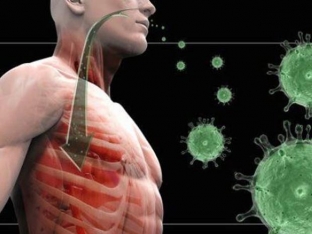During the period of increased incidence of acute respiratory viral infections, the doctor is faced with the task of correctly identifying the virus for effective treatment, as well as for preventing specific complications. The most common infection is influenza. But do not forget that there are several viral infections that are clinically very similar to the flu.
One such virus is parainfluenza. The disease has its own characteristics of the course, as well as a specific complication that needs to be prevented. What complication of parainfluenza is dangerous?
What are the symptoms of parainfluenza? Forms of parainfluenza
Both adults and children can get sick with parainfluenza. Children get sick more often. Infection occurs by airborne droplets. The incubation period is several days. The disease begins with mild intoxication, which is manifested by headache, poor appetite, general weakness. At the same time, rhinitis, pharyngitis and laryngitis develop. The patient complains of cough, runny nose and hoarseness. The temperature rises to 38-38.50С, and lasts for several days, but may be within the normal range. There are different clinical forms of parainfluenza, depending on the predominance of catarrhal phenomena.
Clinical forms of parainfluenza:
- acute rhinitis;
- nasopharyngitis;
- rhinolaryngitis-tracheobronchitis;
- rhinolaryngitis.
What can be the danger of the parainfluenza virus? Complications of parainfluenza
Against the background of the development of the disease, there is a possibility of developing stenosis of the sublingual space, which is called false croup. Croup is an inflammation of the mucous membrane of the larynx, often the trachea and bronchi become inflamed at the same time. This is accompanied by stenosis due to the development of edema in the sublingual space and reflex spasm of the muscles of the larynx.
Often this complication occurs in children under 3 years of age, which makes it even more serious and dangerous. With stenosis of breathing in a patient of a stenotic nature with difficulty in breathing (inspiratory dyspnea), the cough acquires a rough shade, which is characterized as a "barking cough". The spasm develops more often at night, while the edema progresses very quickly. The child's breathing becomes stridotic, noisy, additional muscles are involved in breathing. Acrocyanosis is observed. In severe forms of stenosis with parainfluenza, loss of consciousness due to asphyxia is possible, convulsions, respiratory and cardiac arrest are possible.

How to prevent an attack of spasm of the larynx with parainfluenza?
The main goal of therapy for a child who has developed false croup with parainfluenza is to prevent and relieve attacks of stenosis of the larynx, as well as to relieve inflammation and swelling of the sublingual region. It is important to exclude all factors that contribute to the development of an attack. To do this, you need to: provide access to fresh air, plentiful alkaline drinking, refusal to eat food that irritates the throat.
It is also important to use medicines in the form of syrups, inhalations and aerosols that soften the throat. It is advisable to prescribe antitussive and antihistamine medications.
Treatment of false croup. How to eliminate spasm of the larynx with parainfluenza?
With the development of an attack of stenosis of the larynx with parainfluenza, it is necessary to administer glucocorticosteroids, antispastic and sedatives. Since spasms in parainfluenza are caused by reflex spasm of the larynx, they can be stopped by an alternative reflex.
To do this, you need to press on the root of the tongue, causing a gag reflex, or to cause a sneeze in a child by tickling him in the nose. Also, to prevent and treat spasm with parainfluenza, warm compresses are used on the chest and larynx, cans on the back and hot foot baths. These procedures will help save the child from suffering.







Add a comment